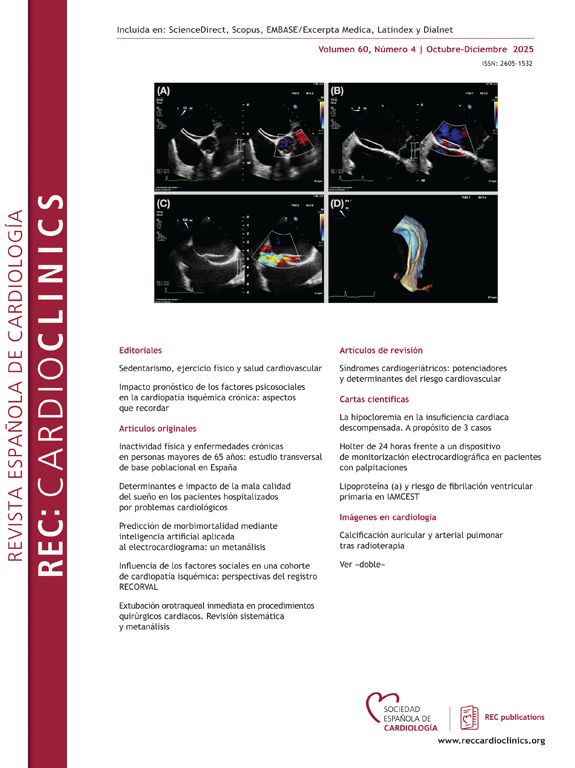A 77-year-old woman with constitutional symptoms was admitted for acute pulmonary edema. The transthoracic echocardiography showed an intracardiac lesion (Fig. 1A) located in the left atrium (LA) and infiltrating the mitral valve leaflets, leading to severe mitral stenosis. Computed tomography and transesophageal echocardiography confirmed the transthoracic echocardiography findings (Fig. 1B–D). Cardiac magnetic resonance imaging revealed a 62mm×33mm×50mm mass in left atrium roof with irregular borders, extending to left atrial appendage and invading it (Fig. 1E–H). It extended to the atrial and ventricular surfaces of the mitral valve, with a mobile component protruding into the ventricle in diastole. The lesion showed hypersignal on T2/T1 and heterogeneous late gadolinium enhancement (LGE), ruling out a thrombus (Fig. 1I–K). Two other similar lesions were evident. She had a slight pericardial effusion with LGE of the pericardium. Chest-abdomen-pelvis computed tomography and positron emission tomography (Fig. 1L) ruled out metastasis. The tumor was unresectable and biopsy by cardiac catheterization was not possible given the risk of embolization. A lymph node biopsy was considered. However, the patient's condition rapidly worsened, with a large pericardial effusion requiring pericardiocentesis, and died in hospital. The pericardial fluid's cytology showed no neoplastic cells.
The large size, irregular borders and invasion of adjacent structures suggest a primary malignant cardiac tumor. The pericardial effusion and LGE within the tumor support the diagnosis. Sarcoma is the most likely diagnosis based on clinical and imaging findings in an immunocompetent patient (lymphoma less likely). However, a tissue sample was not obtained for anatomopathological study, and a definitive histological diagnosis was not possible.
FundingThe authors declare that they have no sources of funding.
Ethical considerationsThis study was approved by the local ethics committee. Written informed consent from the patient's family was obtained for this publication. The authors followed SAGER guidelines for addressing sex and gender variables.
Statement on the use of artificial intelligenceNo artificial intelligence tool was not used.
Authors’ contributionsAll the authors contributed to writing and critically reviewing this article.
Conflicts of interestNone declared.










